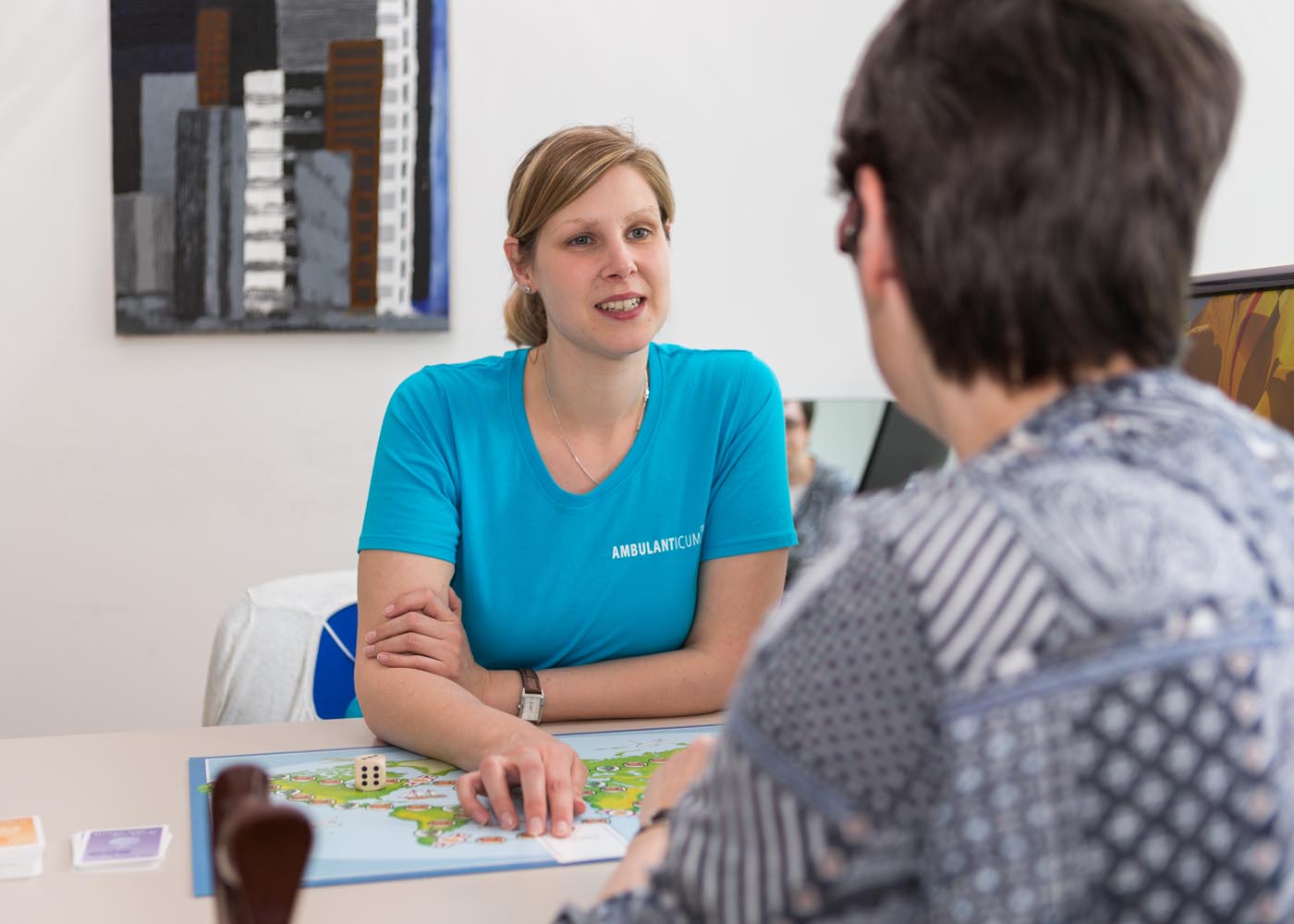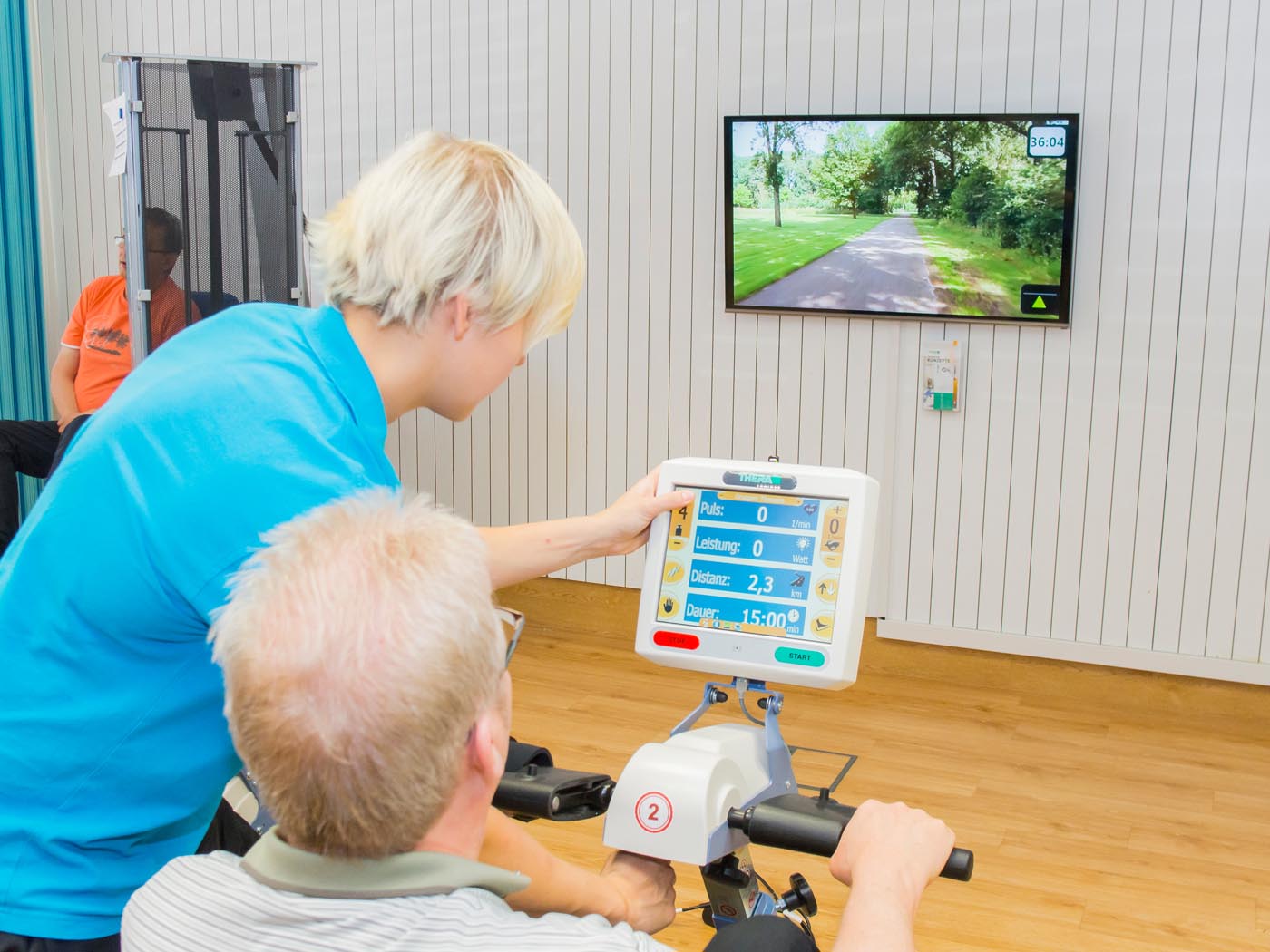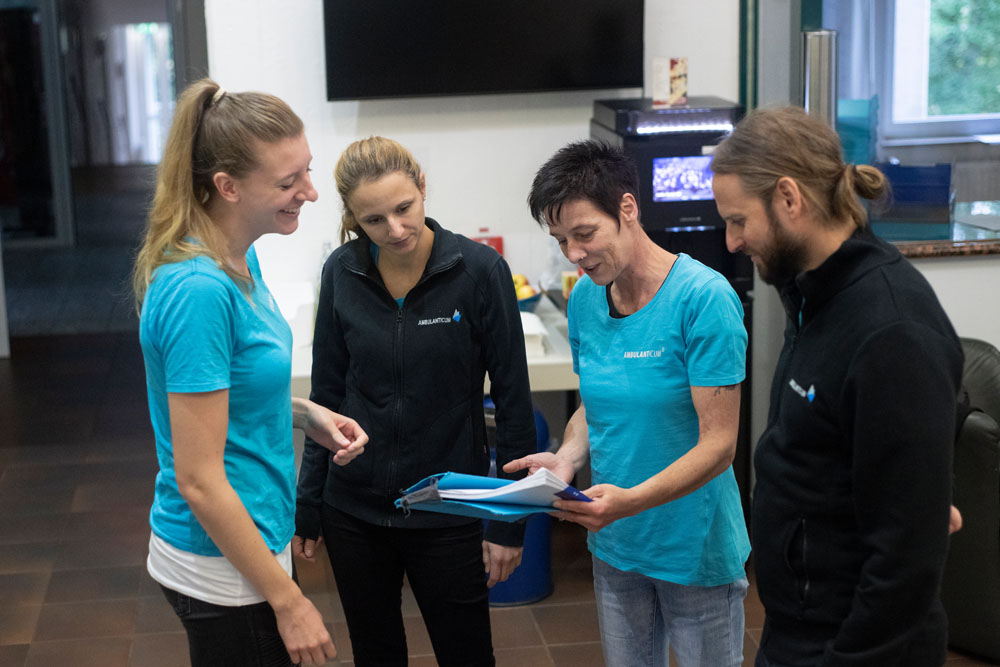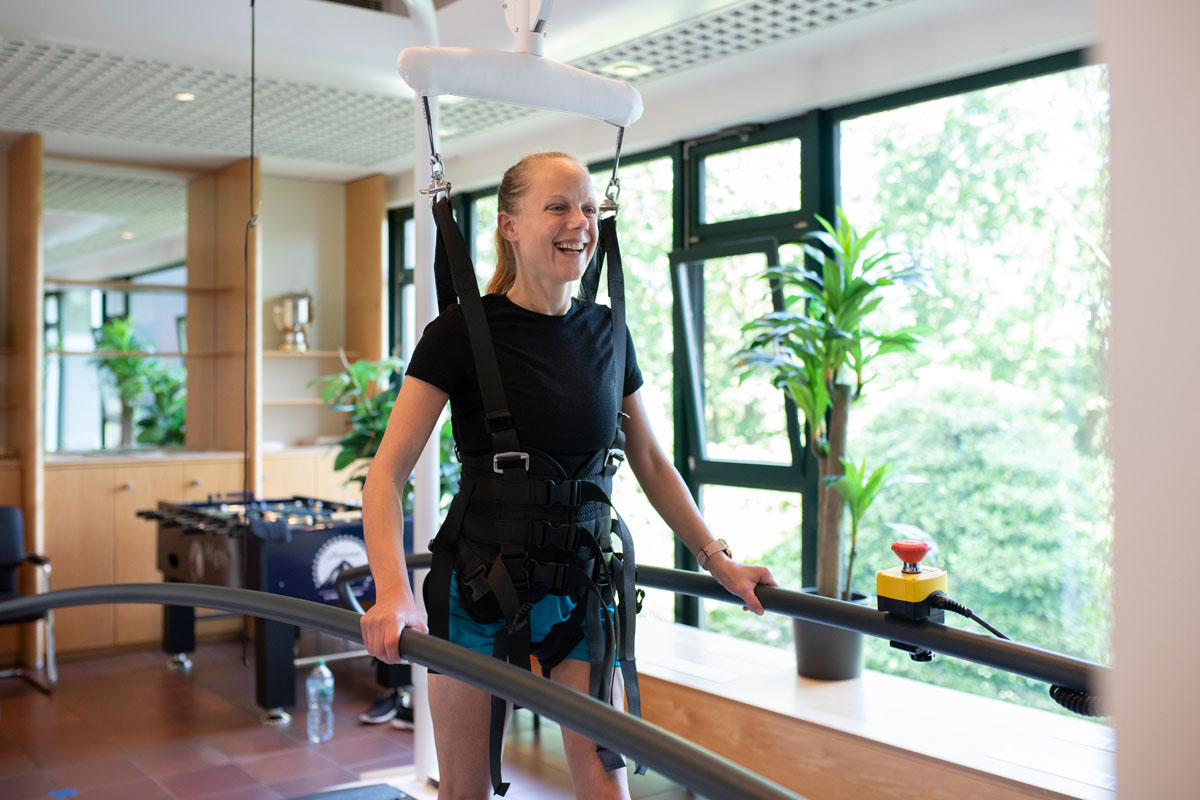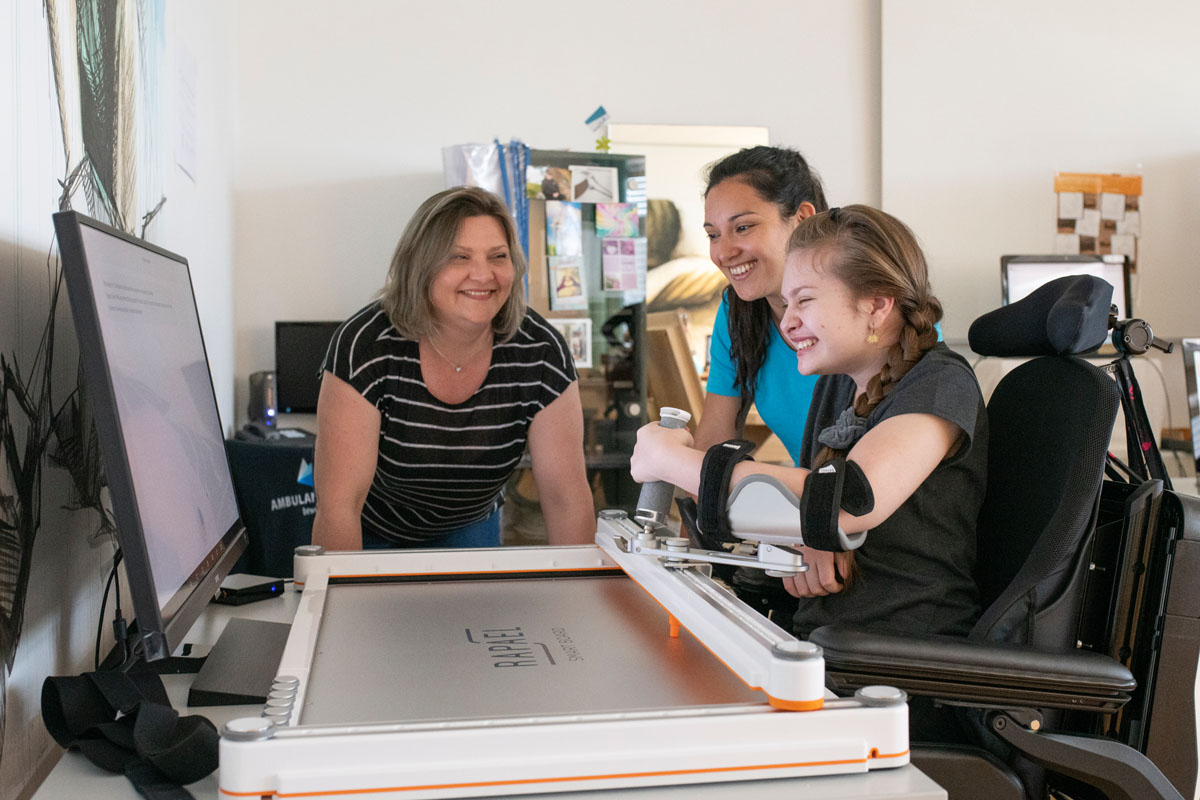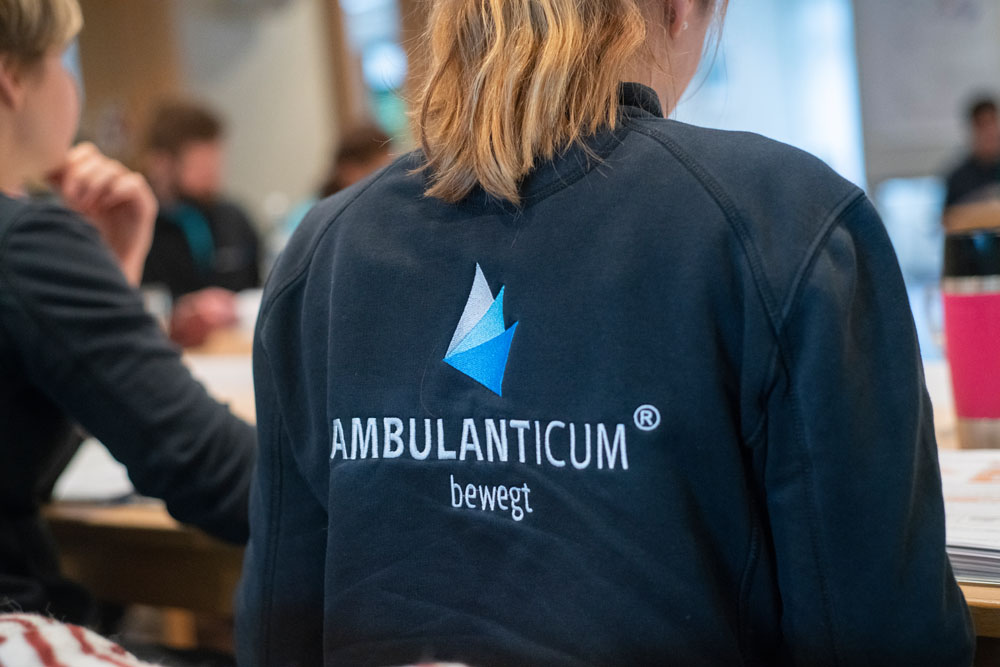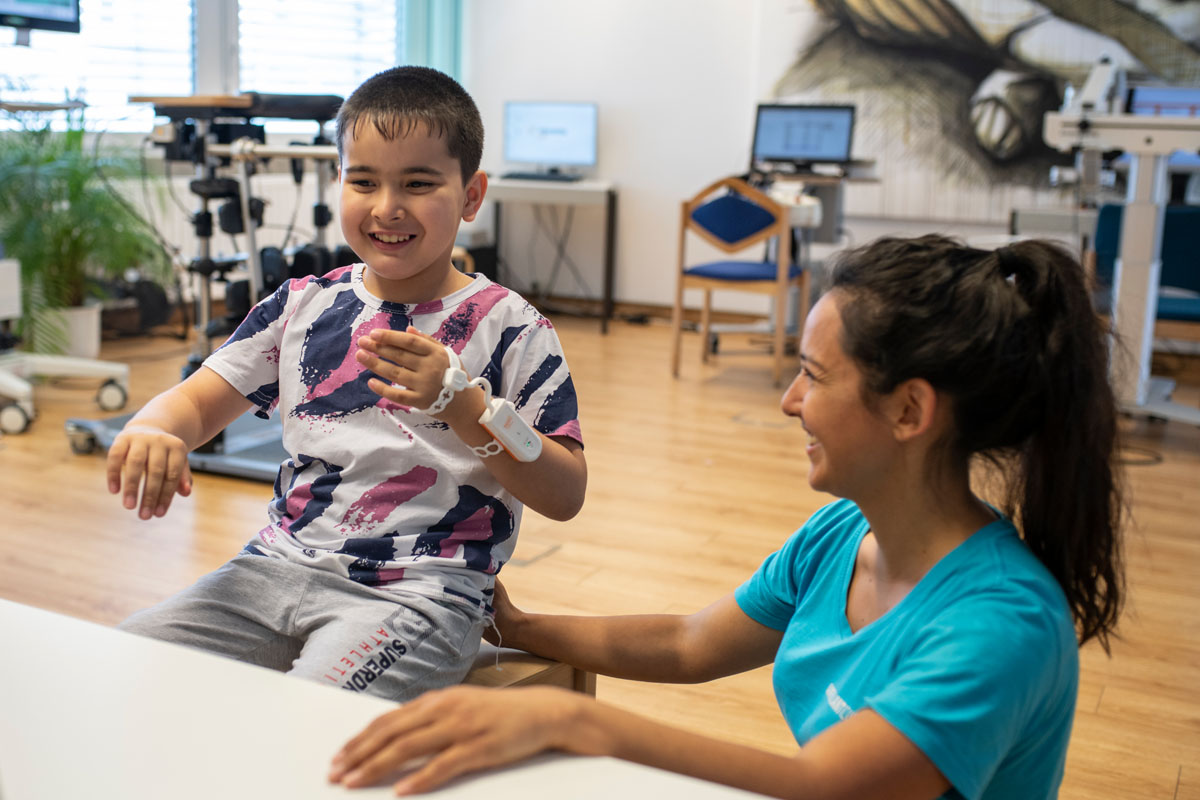Step 1: Defining the therapy plan
At the start of every intensive care treatment at AMBULANTICUM®, we define the primary focus and goals of therapy for the individual. Our team of therapists compile a course of treatment and determine the therapy plan as well as the necessary measures of intensive care in close coordination with the patient and their relatives, based on numerous discussions and ICF classified interdisciplinary findings.
Due to the fact that we are an outpatient based treatment centre, patients and their carers that are from out of town, are accommodated in hotels and holiday apartments. In this way, patients and their carers are able to transfer and apply the acquired exercises and movement patterns into their everyday life right from the start.
Step 2: Setting and reaching therapy goals.
Once the goals are set, we help our patients to advance towards these continuously during the 4 to 7 hours of sessions per day. During our interdisciplinary weekly team meetings, we regularly reflect on the progress in light of the treatment goal and adjust the therapy modules where needed.
The patient is attended by a mentor during the intensive care therapy, who is available at any point in time. All the information converges here. The mentor is the contact person for the relatives, therapists, doctors and medical supply stores, as well as during the home based period.
Video footage, assessments and even gait analyses pervade the intensive care therapy like a red thread. They are important instruments to capture progress developments, to review and adjust therapy goals – irrespective in which field the focus of the measures lie. We point out the developments and improvements to our patients by means of video-based analyses and equipment-based methods of diagnostics. A video analysis visualises the acquired goals at the conclusion of the therapy. The exercises learnt during therapy, the actual level of development, as well as the circumstances at home are the basis for the development of the home program.
Step 3: Schooling of patients and relatives







